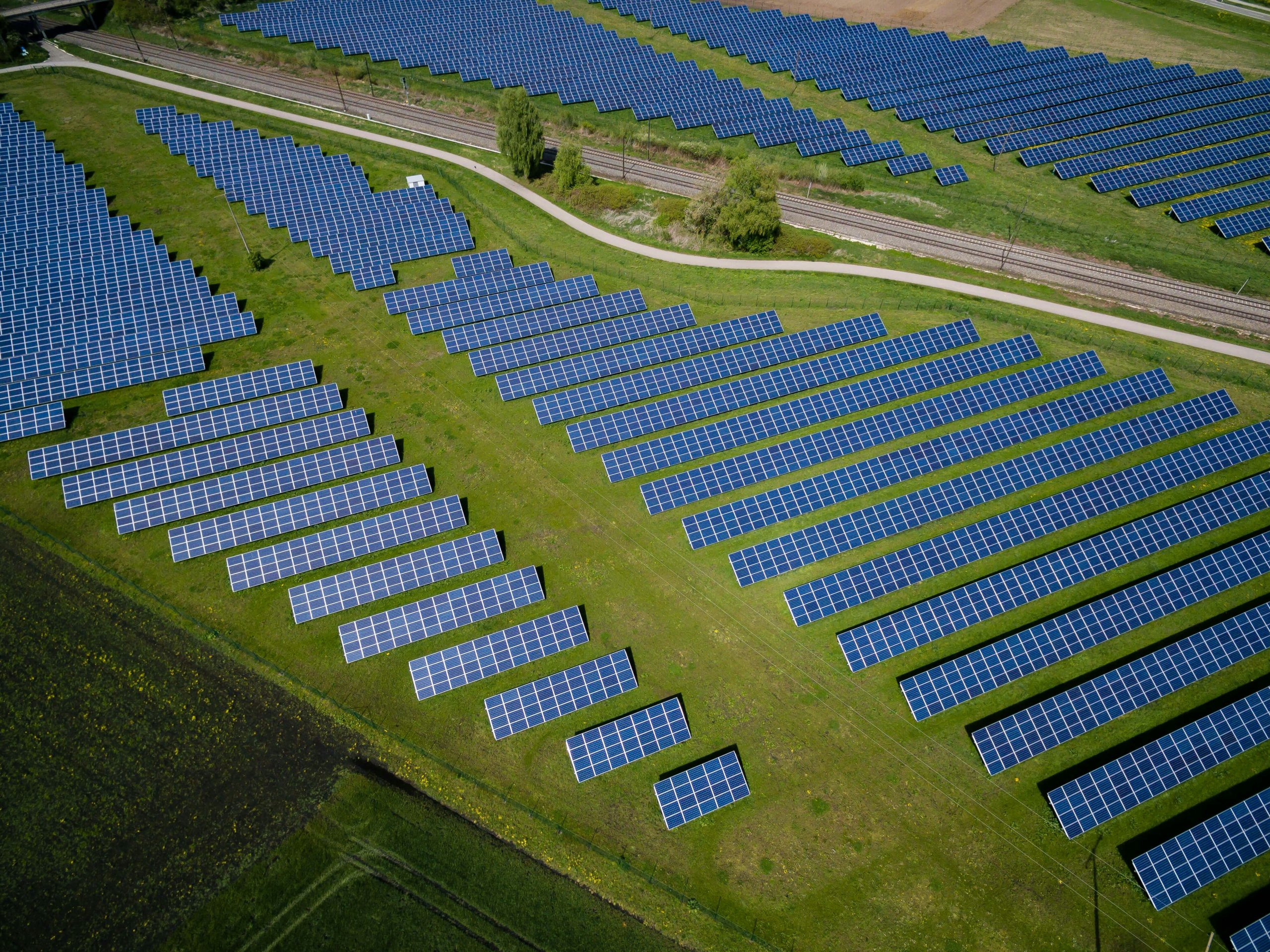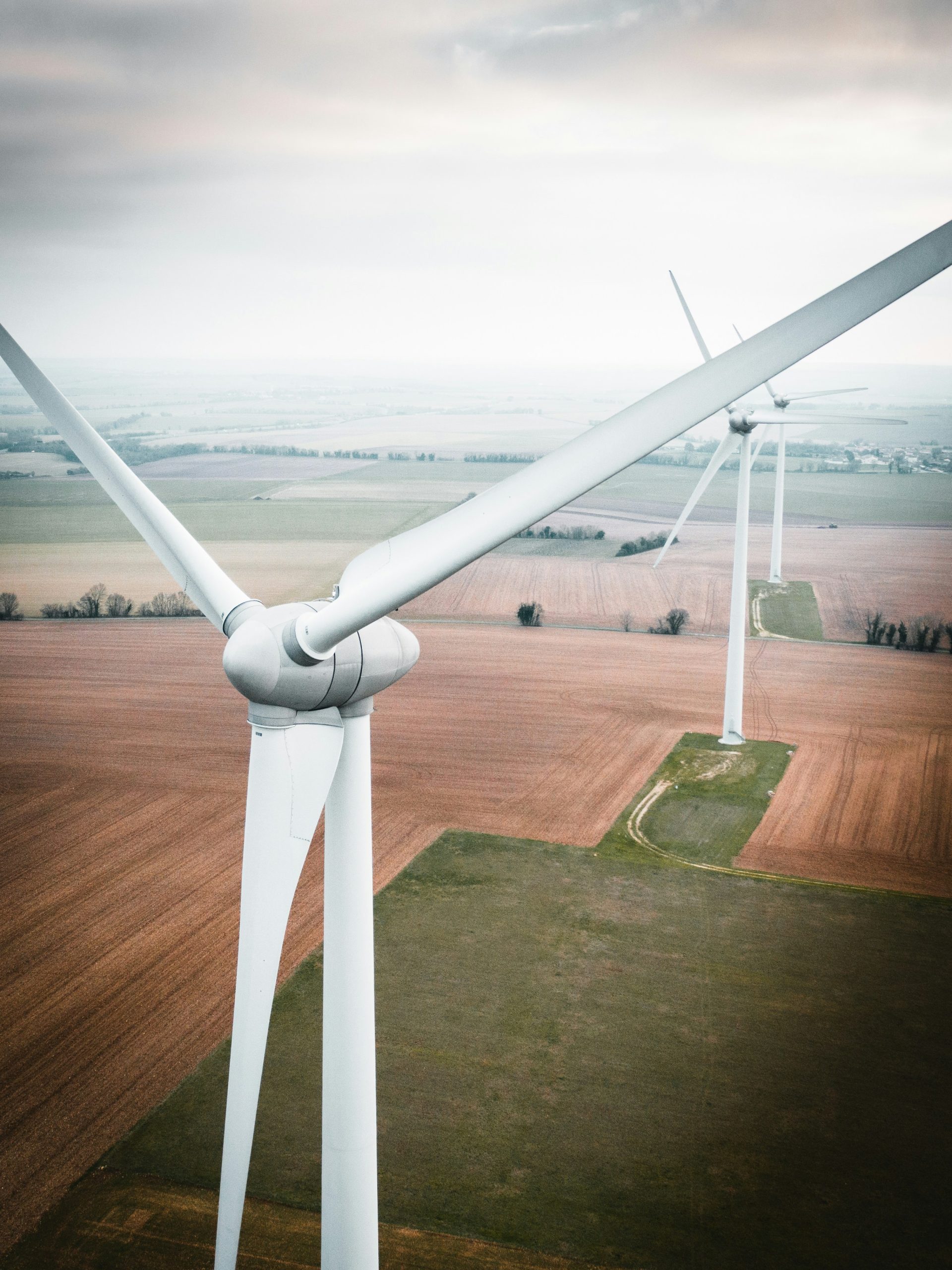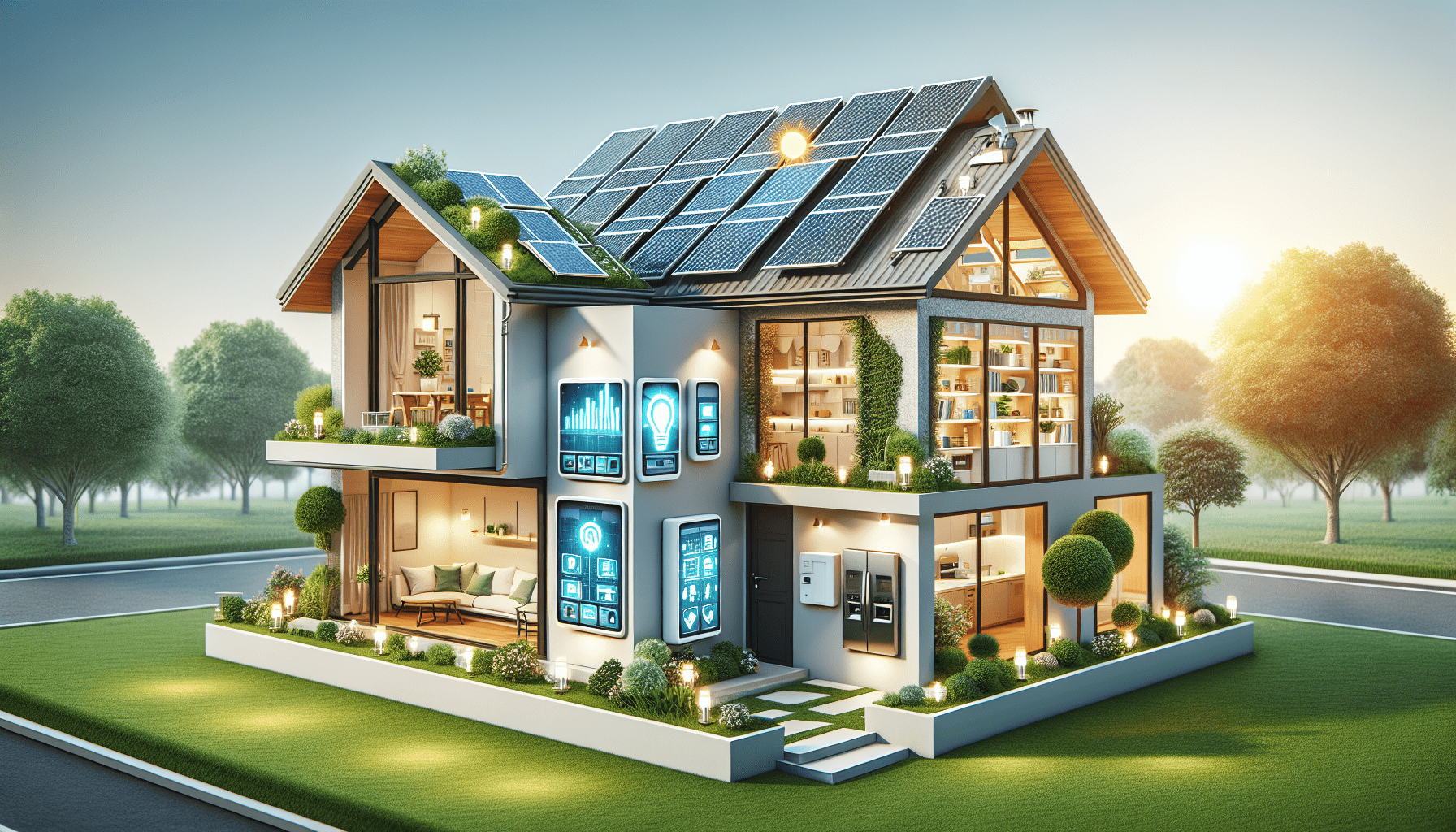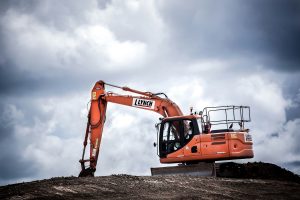In our journey to create a more sustainable lifestyle, making our home energy-efficient plays a crucial role. By incorporating a few simple practices and investing in some smart upgrades, we can significantly reduce our energy consumption and save on utility bills. From sealing drafty windows to using energy-efficient appliances, each step we take not only benefits our wallet but also contributes to a healthier planet. Let’s explore practical and effective ways to make our living spaces more energy-efficient and environmentally friendly. Have you ever wondered, “How can I make my home more energy-efficient?” If you’re like us, worries about high utility bills, environmental impact, and the desire for a cozy home have probably crossed your mind. Fortunately, making your home more energy-efficient is entirely achievable with a little effort and know-how.
In this comprehensive guide, we’re diving deep into practical steps and useful tips that can help you save energy, cut costs, and reduce your carbon footprint. Not only will you be doing your part for the environment, but you’ll also enjoy a more comfortable and cost-effective living space. So let’s get started on our journey to a more energy-efficient home!
Understanding Energy Efficiency
Before we jump into specific steps, it’s important to understand what energy efficiency actually means. When we talk about energy efficiency, we’re referring to using less energy to perform the same task – essentially getting more bang for our buck. This can be achieved in several ways, such as improving our home’s insulation, switching to energy-efficient appliances, and changing our daily habits.
Why Energy Efficiency is Important
Energy efficiency isn’t just a buzzword. It’s a crucial aspect of home management that has significant benefits.
- Cost Savings: By using less energy, we can significantly lower our utility bills.
- Environmental Impact: Reducing energy consumption lowers our carbon footprint, which is vital for combating climate change.
- Comfort: Improved energy efficiency often translates to a more comfortable living environment, free of drafts and fluctuations in temperature.
- Home Value: Energy-efficient homes are often valued higher in the real estate market.
With these benefits in mind, let’s look at specific ways to make our homes more energy-efficient.
Conducting an Energy Audit
The first step in making our homes more energy-efficient is conducting an energy audit. This will give us a clear picture of where we’re currently losing energy and where improvements can be made.
DIY Energy Audit
While hiring a professional is always an option, conducting a DIY energy audit can be a great first step. Here’s how we can do it:
| Task | Description |
|---|---|
| Check for Air Leaks | Look for gaps around windows, doors, and vents. Seal them using weatherstripping or caulk. |
| Inspect Insulation | Ensure that our attic, walls, and crawlspaces are properly insulated. |
| Check HVAC System | Make sure our heating and cooling systems are running efficiently. Clean or replace filters regularly. |
| Review Lighting | Identify any remaining incandescent lights and plan to replace them with LEDs or CFLs. |
| Inspect Appliances | Look for older, less efficient appliances and consider replacing them with ENERGY STAR® rated ones. |
| Examine Water Heating | Check for leaks and consider insulating the water heater if it’s an older model. |
Professional Energy Audit
For a more thorough analysis, we can hire a professional energy auditor. They will use tools like blower doors and infrared cameras to identify inefficiencies that might not be visible to the naked eye.
Implementing Audit Findings
After conducting our audit, we should prioritize our findings based on potential savings and ease of implementation.

Improving Insulation and Sealing
One of the most effective ways to boost our home’s energy efficiency is to improve its insulation and sealing. Let’s break this down into manageable steps.
Insulating Our Home
- Attic Insulation: Heat rises, and in the winter, it can escape through our attic. Adding or upgrading attic insulation can significantly cut heating costs.
- Wall Insulation: If our walls are uninsulated, they can be responsible for up to 35% of heat loss. Blown-in cellulose or foam insulation can be a good solution.
- Floor Insulation: Don’t forget about any crawlspaces or basements. Insulating these areas can help maintain a consistent temperature in our home.
Sealing Air Leaks
- Weatherstripping: Apply weatherstripping to doors and windows to prevent drafts.
- Caulking: Use caulk to seal gaps around stationary components such as window frames.
- Outlet Gaskets: Install outlet gaskets behind electrical outlets on exterior walls to minimize energy loss.
Using the Right Materials
When it comes to insulation, choosing the right materials is crucial. Here’s a quick guide:
| Material | Best For | R-Value per Inch |
|---|---|---|
| Fiberglass | Walls, attic, and floors | 2.9-3.8 |
| Cellulose | Walls, attic, and floors | 3.1-3.8 |
| Foam Board | Basement walls, under floors | 3.6-8.0 |
| Spray Foam | Hard-to-insulate areas, attics, walls | 3.5-6.5 |
| Radiant Barriers | Attics and spaces subject to radiant heat | Reflective |
By choosing the best materials and focusing on key areas, we can make a huge dent in our energy consumption.
Upgrading to Energy-efficient Windows
Windows are beautiful but can also be a major source of energy loss. Upgrading to energy-efficient windows can save us a lot of money in the long run.
Types of Energy-efficient Windows
- Double-Glazed Windows: These windows have two panes of glass with a gap in between filled with air or insulating gas like argon. This design significantly reduces heat loss.
- Low-E Windows: These windows have a special coating that reflects heat back into the room during winter and keeps it out during summer.
- Triple-Glazed Windows: While more expensive, these windows offer superior insulation by incorporating three panes of glass.
Window Films and Treatments
If replacing our windows isn’t an option, we can still improve their efficiency with films and treatments:
- Window Films: Applying a window film can help block heat in the summer and retain it in the winter.
- Heavy Curtains: Using heavy curtains or thermal drapes can provide an additional layer of insulation.
- Window Shades: Cellular or honeycomb shades are designed to trap air and add an extra barrier to heat loss.

Efficient Heating and Cooling
Heating and cooling make up a significant portion of our energy expenses. By optimizing our systems, we can save a lot on our utility bills.
Regular Maintenance
- Replace Air Filters: Dirty filters make our HVAC systems work harder, consuming more energy. Replace them every 1-3 months.
- Annual Check-up: Schedule a professional to inspect and service our heating and cooling systems annually.
- Duct Sealing: Ensure that ducts are properly sealed and insulated to reduce energy loss.
Upgrading HVAC Systems
If our system is more than 10-15 years old, consider upgrading to a more energy-efficient model:
| System | Pros |
|---|---|
| High-Efficiency Furnace | Up to 98% AFUE (Annual Fuel Utilization Efficiency) |
| Heat Pumps | Efficient for both heating and cooling |
| Ductless Mini-Splits | Ideal for homes without ducts, highly efficient |
Smart Thermostats
Investing in a smart thermostat can make a big difference. These devices learn our schedule and adjust temperatures automatically for maximum efficiency.
- Programmable Settings: Allow us to set different temperatures for different times of the day.
- Remote Access: We can control them via our smartphone, ensuring we never waste energy.
- Energy Reports: Help track usage and identify areas for improvement.
Efficient Lighting Solutions
Switching to energy-efficient lighting is one of the easiest and most cost-effective ways to reduce our energy consumption.
LED Bulbs
LED bulbs use up to 80% less energy than traditional incandescent bulbs and can last up to 25 times longer. They come in a variety of colors and brightness levels to fit any need.
| Type | Energy Use | Lifespan | Notes |
|---|---|---|---|
| Incandescent | High | 1,000 hours | Outdated technology |
| CFL | Medium | 8,000 hours | Contains small amounts of mercury |
| LED | Low | 25,000 hours | Highly efficient, various options |
Smart Lighting
Smart lighting systems allow us to control our lights remotely and set schedules for when they should be on or off. This can greatly enhance energy savings and convenience.
- Motion Sensors: Automatically turn lights on when someone enters a room and off when they leave.
- Dimmers: Adjust the brightness level to save energy and set the mood.
- Timers: Ensure lights are only on when needed.

Efficient Water Heating
Water heating is another big energy user. Optimizing our water heating system can result in substantial savings.
Insulating Water Heaters
For older water heaters, adding an insulating blanket can reduce heat loss and improve efficiency.
Lowering the Thermostat
Setting our water heater’s thermostat to 120 degrees Fahrenheit is usually sufficient for most household needs and can save a surprising amount of energy.
Upgrading to Efficient Models
Consider switching to a more efficient water heater:
| Type | Pros | Cons |
|---|---|---|
| Tankless Water Heaters | Provide hot water on demand, energy savings | Higher initial cost |
| Heat Pump Water Heaters | Highly efficient, lower operating costs | Large and may require additional space |
| Solar Water Heaters | Use renewable energy, can significantly cut costs | High upfront cost, weather dependent |
| Condensing Water Heaters | Utilizes waste heat, very efficient | Higher initial cost |
Utilizing Renewable Energy
Renewable energy sources like solar or wind can power our homes while drastically reducing our utility bills and carbon footprint.
Solar Panels
Solar panels convert sunlight into electricity and can significantly reduce or even eliminate our electric bill. While the initial investment can be high, there are various incentives and rebates available that can help offset the cost.
Wind Turbines
For those of us with enough property, small wind turbines can provide a renewable source of energy. They are most effective in areas with consistent wind speeds.
Geothermal Systems
Geothermal systems use the constant temperature of the earth to heat and cool our homes. While the installation can be expensive, the long-term savings are considerable.
Government Incentives
Many governments offer incentives for installing renewable energy systems. These can include tax credits, rebates, and grants. Be sure to research what is available in our area to maximize our savings.

Energy-efficient Appliances
When replacing old appliances, choosing energy-efficient models can make a significant difference in our energy consumption.
Look for ENERGY STAR® Ratings
ENERGY STAR® certified appliances meet strict energy efficiency guidelines and can save up to 30% on energy costs.
Here’s a quick comparison:
| Appliance | Standard Model (Annual Cost) | ENERGY STAR® Model (Annual Cost) |
|---|---|---|
| Refrigerator | $150 | $80 |
| Dishwasher | $35 | $25 |
| Washing Machine | $70 | $50 |
| Dryer | $85 | $60 |
| Air Conditioner | $150 | $100 |
Buying ENERGY STAR® certified products ensures that we’re getting a model that will help us save energy and money.
Adopting Energy-efficient Habits
All the upgrades in the world won’t make a difference if we don’t also adopt energy-efficient habits. Simple behavioral changes can have a big impact on our energy consumption.
Heating and Cooling Practices
- Use Ceiling Fans: In the summer, ceiling fans can help us feel cooler, allowing us to set the thermostat higher.
- Dress Appropriately: Wear warmer clothing in the winter and lighter clothing in the summer to reduce the need for heating and cooling.
- Close Blinds and Curtains: Keep heat out during the day in summer and retain heat during winter nights by closing blinds and curtains.
Water Usage
- Shorter Showers: Reducing shower time can save a significant amount of water and energy.
- Fix Leaks: A dripping faucet can waste gallons of water each day. Fix leaks promptly to avoid water and energy waste.
- Use Cold Water: For laundry, using cold water can save energy and is often just as effective for cleaning clothes.
Lighting Practices
- Turn Off Lights: Make it a habit to turn off lights when leaving a room.
- Natural Light: Utilize natural light as much as possible during the day to reduce the need for artificial lighting.
Using Appliances Efficiently
- Full Loads: Run dishwashers and washing machines with full loads to maximize efficiency.
- Air Drying: Whenever possible, air dry clothes instead of using the dryer.
- Unplug Devices: Many devices consume energy even when they’re turned off. Unplugging them can prevent this “phantom” energy usage.

Monitoring Energy Use
Monitoring our energy use can help us make informed decisions and identify areas for improvement.
Smart Meters
Smart meters provide real-time data on our energy consumption, allowing us to see exactly where and when we’re using the most energy. This information can be invaluable for making adjustments and spotting inefficiencies.
Energy Monitors
Portable energy monitors can be plugged into individual appliances to measure their energy consumption. This can help identify which devices are using the most energy and when it’s time to upgrade to a more efficient model.
Energy Usage Apps
There are various apps available that can help us track our energy usage and offer tips for reducing consumption. Many utility companies also offer online tools for monitoring energy use.
Conclusion
Improving the energy efficiency of our home is not just a one-time project but an ongoing journey. By making thoughtful upgrades, adopting efficient habits, and continuously monitoring our energy use, we can create a home that is more comfortable, cost-effective, and environmentally friendly.
Each small step we take contributes to a larger impact, helping us save money and protect the planet for future generations. So whether we’re just starting out on this journey or looking for new ways to improve, there’s always something we can do to make our home more energy-efficient. Let’s get started today!



